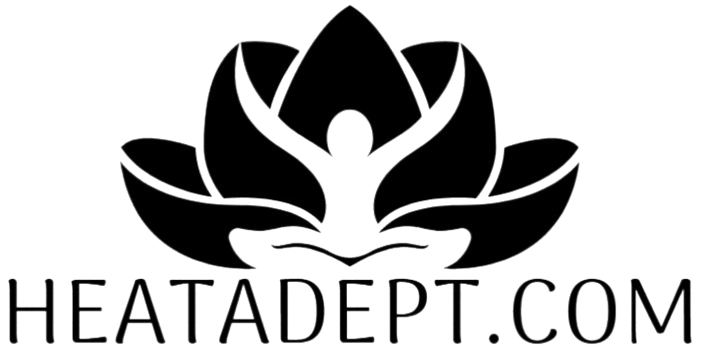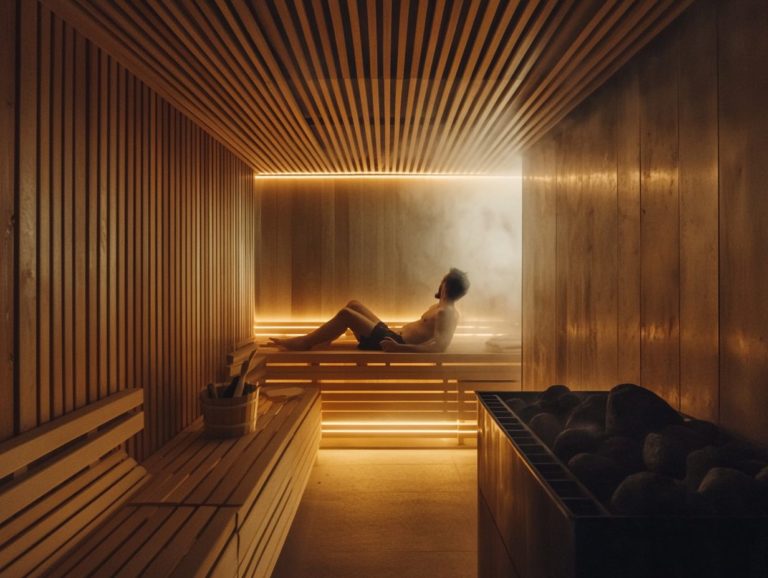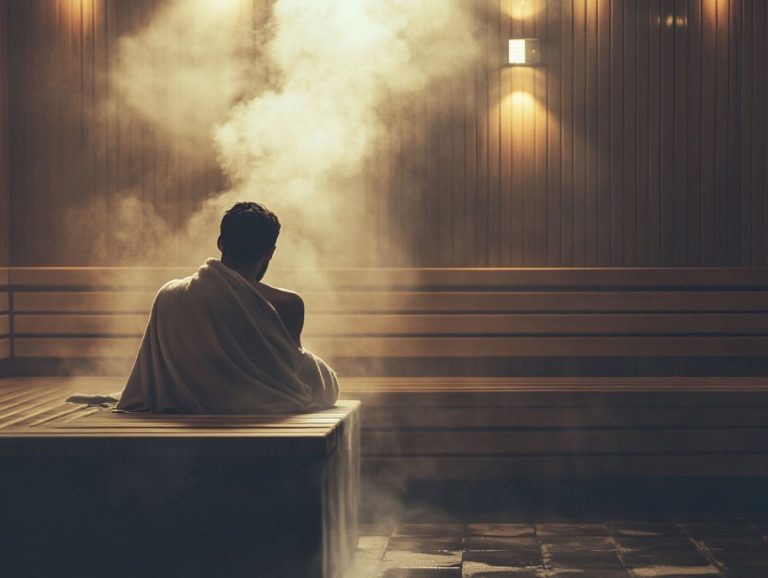The Art of Progressive Muscle Relaxation
In today’s fast-paced world, stress can significantly impact your physical and mental well-being.
One effective way to combat this is through Progressive Muscle Relaxation (PMR), a technique that allows you to unwind by systematically tensing and relaxing each muscle group.
Dive into this exciting guide where you’ll discover the essentials of PMR, delve into its scientific foundation, and highlight the numerous benefits it offers.
You ll uncover practical steps to seamlessly incorporate PMR into your daily routine, along with insightful tips to ensure your success.
Don’t wait! Start using this powerful tool today to transform your relaxation and boost your health!
Contents
- Key Takeaways:
- The Basics of Progressive Muscle Relaxation
- How Progressive Muscle Relaxation Works
- Benefits of Progressive Muscle Relaxation
- Techniques and Steps for Progressive Muscle Relaxation
- Incorporating Progressive Muscle Relaxation into Daily Life
- Common Misconceptions and Tips for Success
- Frequently Asked Questions
- What is the art of progressive muscle relaxation?
- How does progressive muscle relaxation work?
- Why Should You Practice PMR?
- How can I learn the art of progressive muscle relaxation?
- Is progressive muscle relaxation safe for everyone?
- Can progressive muscle relaxation be used in combination with other relaxation techniques?
Key Takeaways:

- Progressive Muscle Relaxation is a technique that involves systematically tensing and relaxing muscles to reduce tension and stress in the body.
- This technique has been scientifically proven to decrease anxiety, improve sleep quality, and alleviate physical pain.
- By incorporating Progressive Muscle Relaxation into a daily routine and addressing common misconceptions, individuals can experience the full range of benefits for their physical and mental well-being, including anxiety relief and tension release.
The Basics of Progressive Muscle Relaxation
Progressive Muscle Relaxation (PMR), a renowned technique crafted by Edmund Jacobson, offers an effective approach for you to manage anxiety and stress.
By systematically tensing and relaxing distinct muscle groups throughout your body, this method fosters a profound relaxation response.
Engaging in PMR not only cultivates physical relaxation but also significantly elevates your mental relaxation and overall well-being.
What is Progressive Muscle Relaxation?
Progressive Muscle Relaxation (PMR) is a guided relaxation technique designed to help you reduce muscle tension and cultivate a profound sense of calm by systematically tensing and relaxing different muscle groups.
This method, developed by the American physician Edmund Jacobson in the early 20th century, was created to tackle the physiological symptoms of stress and anxiety.
Jacobson believed that your physical body and mental state are intricately connected. By engaging in PMR, you can enhance your overall emotional well-being.
You’ll find that this technique has a wide range of applications, whether in clinical settings, wellness programs, or your personal practice.
By honing in on specific muscle groups, you can develop a heightened awareness of your body, leading to significant therapeutic benefits.
PMR boosts your psychological resilience. It is recognized for effectively alleviating symptoms of stress, anxiety, and insomnia.
When you incorporate breathing exercises with PMR, you enrich the relaxation experience, further promoting mental clarity and emotional balance.
How Progressive Muscle Relaxation Works
Progressive Muscle Relaxation engages the relaxation response, a sophisticated physiological process that counters the effects of the sympathetic nervous system, which is the part of your nervous system that triggers stress responses.
By activating the parasympathetic nervous system, it ushers in a state of profound relaxation, allowing you to experience a tranquil oasis amidst the chaos of daily life.
The Science Behind the Technique
The scientific foundation of Progressive Muscle Relaxation (PMR) lies in understanding the intricate relationship between muscle tension and anxiety levels.
By recognizing how muscle tension impacts overall health, individuals can experience notable improvements in sleep quality and reductions in high blood pressure.
Numerous studies have shown that this relaxation technique not only alleviates muscle tension but also significantly lessens feelings of anxiety.
By systematically tensing and then relaxing various muscle groups, you can cultivate a heightened state of awareness and effectively reduce physiological stress responses.
Research suggests that regular practice leads to measurable enhancements in mental health, including improved emotional well-being and lowered cortisol levels, which are often correlated with chronic stress and high blood pressure.
In clinical environments, the use of PMR has been linked to better coping mechanisms, enabling you to address everyday stressors more effectively while fostering an overall sense of calm and balance.
Ready to reduce your stress? Start practicing PMR today and discover the benefits of nature therapy to feel the difference!
Benefits of Progressive Muscle Relaxation
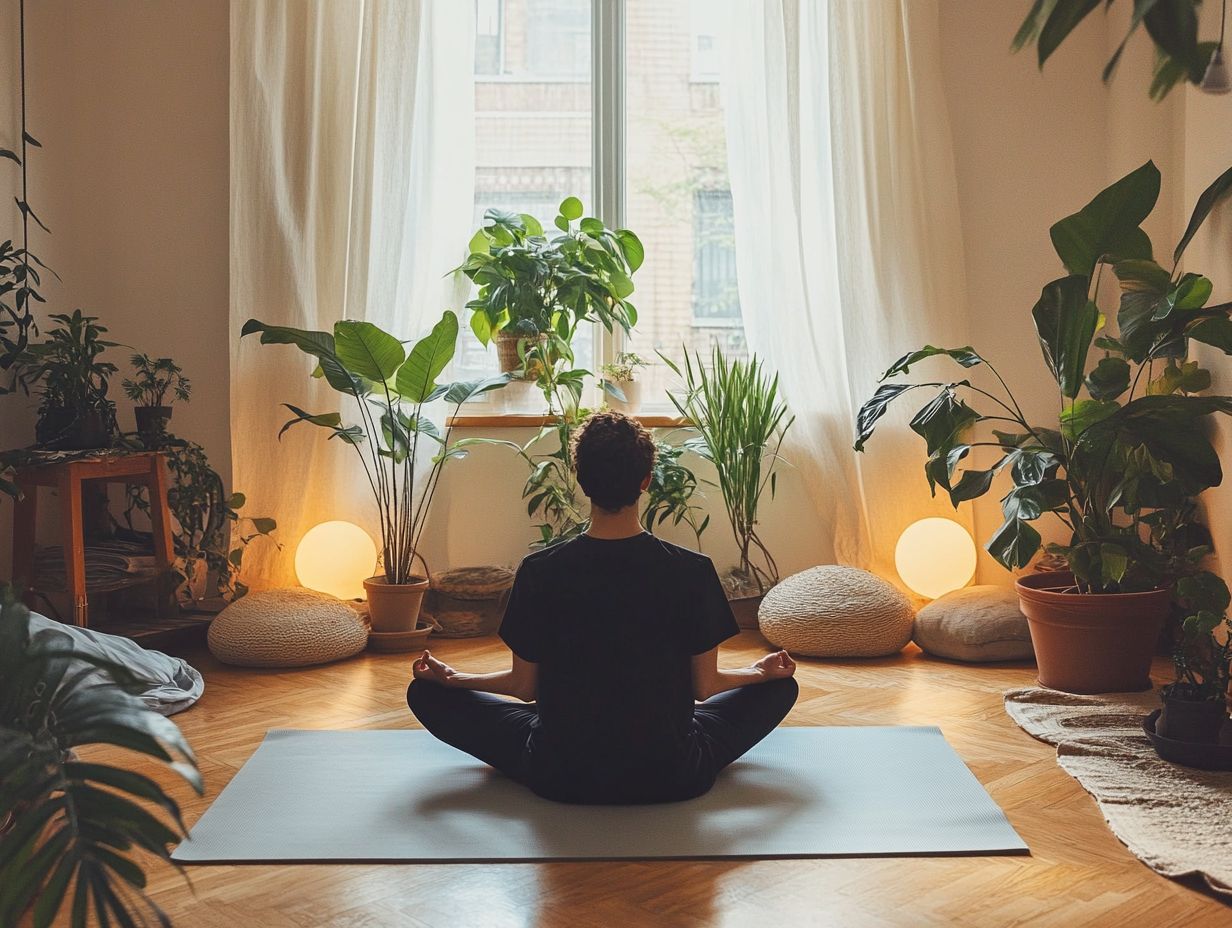
The benefits of Progressive Muscle Relaxation are extensive, offering both physical relaxation and mental wellness. This method is a powerful tool for alleviating anxiety, releasing tension, and providing overall therapeutic advantages for individuals of all ages.
Physical and Mental Health Benefits
Progressive Muscle Relaxation (PMR) provides a wealth of physical and mental health benefits tailored to your needs. Whether you’re dealing with neck pain, migraines, managing TMJ symptoms, or struggling with insomnia, PMR can enhance your well-being and improve sleep quality.
This relaxation technique is an invaluable ally against anxiety. PMR promotes deep breathing and increased body awareness, fostering a calming effect that transforms your daily experience. Many who incorporate PMR into their routines notice a marked reduction in muscle tension, often linked to chronic stress. Additionally, exploring the role of nature in relaxation methods can further enhance your overall well-being.
As you carefully tighten and relax various muscle groups, you’ll become attuned to where you store stress and discover effective ways to release it. This practice creates a profound sense of relief that radiates through your entire body, strengthening your well-being and resilience in the face of life’s challenges. To enhance your relaxation, consider exploring the benefits of nature walks for relaxation.
Techniques and Steps for Progressive Muscle Relaxation
The techniques and steps for Progressive Muscle Relaxation provide a step-by-step guide to mastering this method. Whether you choose guided relaxation or self-guided exercises, you’ll find a path to achieving optimal muscle tension reduction.
This structured approach ensures that you can effectively practice and enjoy the full benefits of this powerful technique.
Step-by-Step Guide for Practice
A step-by-step guide for practicing Progressive Muscle Relaxation focuses on different muscle groups while using deep breathing techniques to facilitate relaxation.
This method encourages you to tighten and then release specific muscle groups, helping you become aware of your physical sensations and tension levels. To enhance your relaxation experience, consider exploring the benefits of slow living for relaxation. Start at your feet and gradually work your way up to your head to experience a profound sense of release.
Inhale deeply through your nose, hold your breath for a moment, then exhale slowly through your mouth. This simple act promotes an even deeper state of relaxation.
This practice not only reduces stress but also enhances your overall well-being, making it a valuable tool for anyone looking to incorporate mindfulness into their daily routine.
Incorporating Progressive Muscle Relaxation into Daily Life
Incorporating Progressive Muscle Relaxation into your daily life can enhance your well-being. By weaving this mindfulness practice into your routine, you ll foster effective stress management and cultivate relaxation, enriching your overall quality of life.
Incorporating the Technique into a Routine
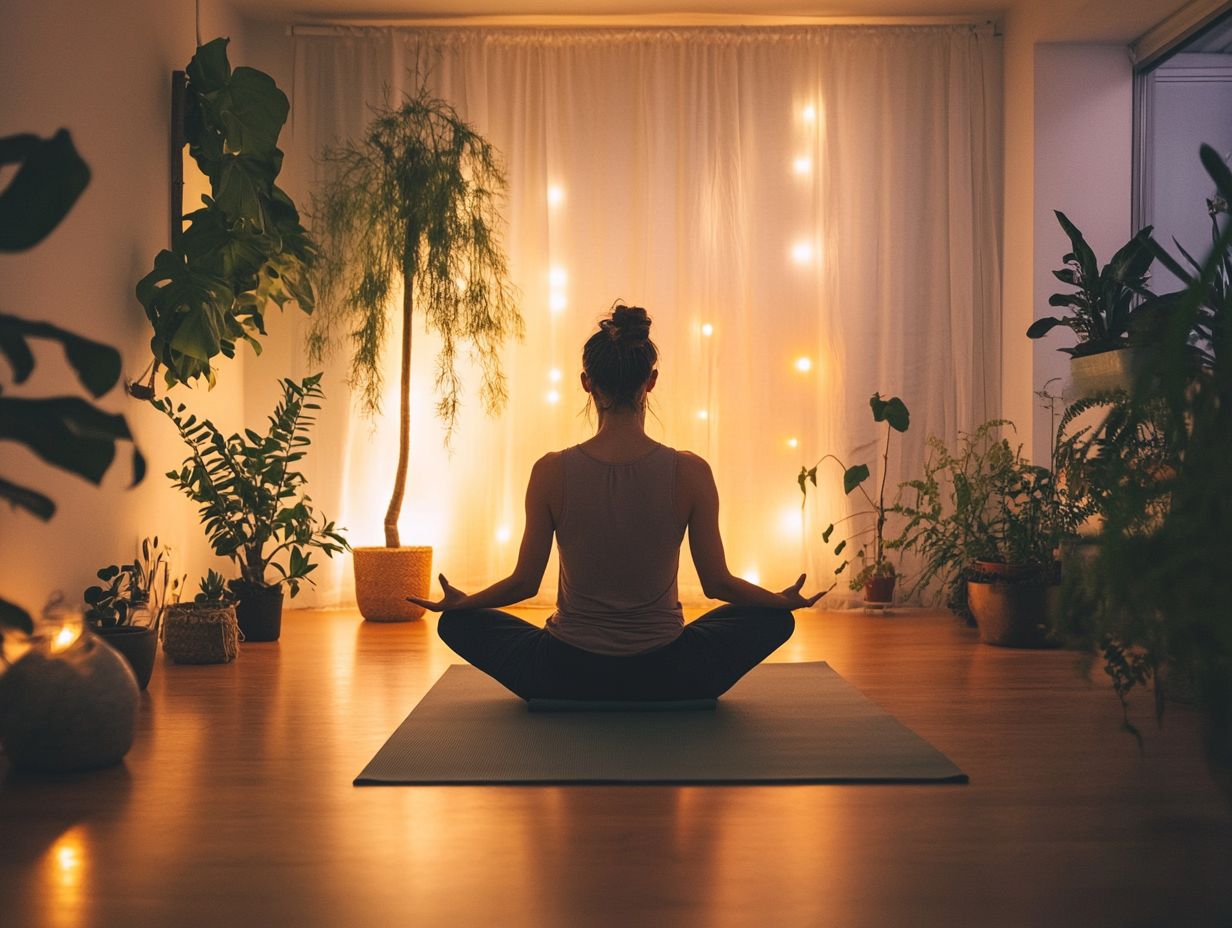
To effectively incorporate Progressive Muscle Relaxation into your routine, designate specific times during the day for practice, making it a natural part of your stress management strategies.
By carving out moments perhaps early mornings or during lunch breaks you create opportunities to engage fully in this mindfulness practice. Integrating PMR involves physical relaxation and mental clarity, enhancing your overall well-being.
Consider pairing these sessions with deep breathing exercises or guided imagery for a holistic approach to reducing anxiety. Consistency is key; by fostering this habit, you’ll experience maximum benefits such as improved focus and emotional balance while seamlessly weaving relaxation into your busy life.
Common Misconceptions and Tips for Success
Addressing common misconceptions about Progressive Muscle Relaxation is essential for maximizing its effectiveness. By doing so, you empower yourself to embrace best practices that lead to success with this valuable relaxation technique.
Addressing Myths and Best Practices for Success
Let s address the myths about Progressive Muscle Relaxation (PMR). Many believe it’s only effective for severe anxiety.
PMR isn t just for those with debilitating stress or anxiety. It’s a great tool for anyone looking to improve their overall well-being.
It can effectively alleviate general tension and foster a profound sense of calm.
By integrating proven methods like establishing a consistent routine, creating a tranquil environment, and focusing on deep, intentional breathing during your exercises you can unlock the full potential of PMR.
Research shows that PMR can improve sleep quality and reduce muscle strain, making it a versatile and effective relaxation technique suited to a variety of lifestyles and challenges.
Frequently Asked Questions
What is the art of progressive muscle relaxation?
The art of progressive muscle relaxation is a technique that involves tensing and relaxing specific muscle groups to reduce tension and promote relaxation in the body. It helps relieve stress, anxiety, and physical tension.
How does progressive muscle relaxation work?
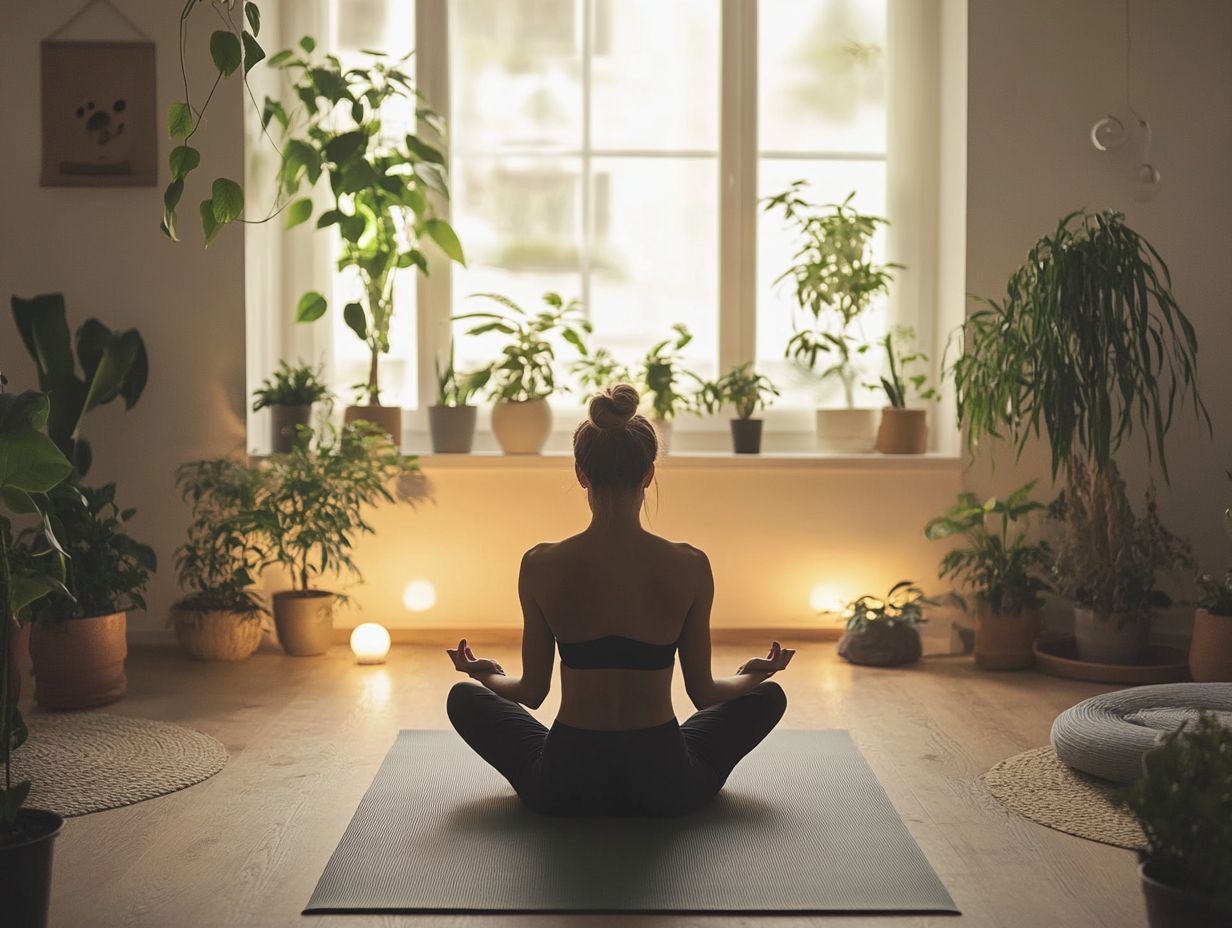
Progressive muscle relaxation works by systematically tensing and relaxing different muscle groups. This releases tension and reduces the body’s stress response, leading to deep relaxation and calmness.
Why Should You Practice PMR?
Practicing PMR can transform your life! Enjoy benefits like less muscle tension, decreased stress and anxiety, improved sleep, and enhanced feelings of relaxation and well-being.
How can I learn the art of progressive muscle relaxation?
There are many resources available for learning PMR, including books, videos, and guided audio recordings. You can also seek guidance from a trained therapist or attend a relaxation or meditation class.
Is progressive muscle relaxation safe for everyone?
While PMR is generally safe for most, it s important to consult a healthcare professional before starting, especially if you have any underlying medical conditions or injuries.
Can progressive muscle relaxation be used in combination with other relaxation techniques?
Absolutely! PMR can be combined with other relaxation techniques such as deep breathing, meditation, and mindfulness practices. This combination enhances the overall effectiveness and benefits of the relaxation process.
